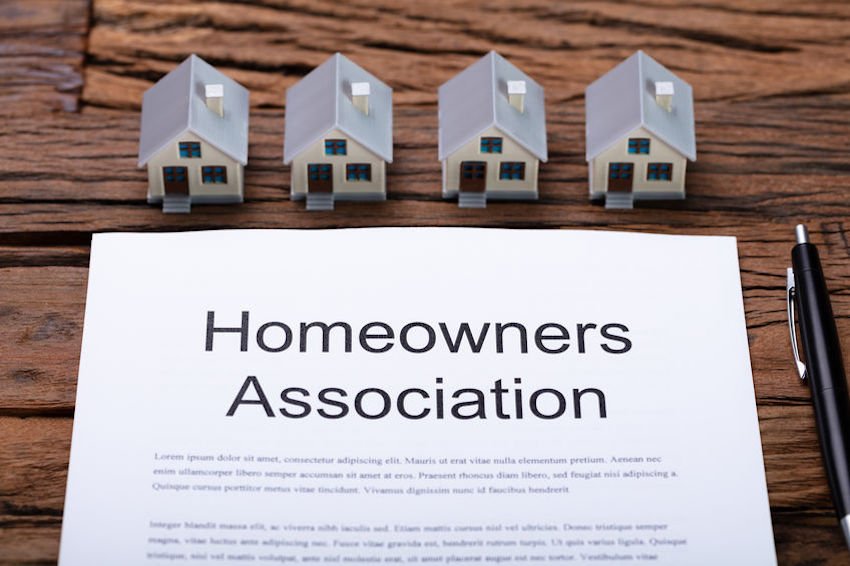HOA Condo Living: Finding Your Perfect Area
HOA Condo Living: Finding Your Perfect Area
Blog Article
The Role of an HOA in Developing and Enforcing Area Standards for Locals
The function of a Homeowners Association (HOA) in imposing and developing area guidelines is fundamental to preserving a organized and natural domestic environment. By formulating clear guidelines that govern facets such as building maintenance and community conduct, the HOA not only sets requirements for residents but also cultivates a sense of belonging and liability.
Comprehending Homeowners Associations
Homeowners associations (HOAs) function as governing bodies for residential neighborhoods, playing an important duty in keeping residential or commercial property values and fostering a sense of community. Commonly formed by developers, HOAs are composed of home owners within an assigned location who choose a board to manage the organization's tasks. The key functions of an HOA include applying neighborhood policies, taking care of common areas, and arranging neighborhood events.
HOAs run under a set of governing files, consisting of covenants, constraints, and conditions (CC&R s), which detail the civil liberties and duties of house owners. These regulations intend to ensure that properties are kept to a particular requirement, consequently shielding the aesthetic allure and general value of the area. Additionally, HOAs usually collect charges from house owners to fund upkeep, landscape design, and various other social work.
The existence of an HOA can considerably influence the living experience within a community (hoa condo). While some citizens value the organized setting and facilities offered, others might find particular laws restrictive. Stabilizing the passions of all house owners is necessary for an HOA to function properly, guaranteeing that it offers its intended objective of improving neighborhood living while respecting specific home owner rights
Establishing Neighborhood Standards

To start, an HOA ought to perform studies or convene that allow locals to articulate their ideas and concerns. This participatory procedure fosters a sense of possession and increases conformity. Next off, the HOA board must examine the comments to recognize usual motifs and concerns that necessitate official inclusion in the standards.
It is also necessary to ensure that the standards are clear, succinct, and conveniently understood. Uncertainties can result in misconceptions and problems, undermining the function of the guidelines. Moreover, the guidelines must be comprehensive, covering various elements of neighborhood living, including residential or commercial property maintenance, noise degrees, and use common locations.
Enforcement of Policies
Efficient enforcement of community policies is vital for maintaining order and ensuring that all citizens stick to the established guidelines. An HOA has to carry out an organized strategy to enforce these guidelines, which usually involves a mix of surveillance, interaction, and penalties for non-compliance.
First, regular assessments and community patrols can help recognize infractions, making certain that policies are regularly applied throughout the area. This aggressive monitoring enables the HOA to attend to concerns prior to they escalate, fostering a sense of liability among citizens.
2nd, clear communication is essential. Locals must be notified of the regulations and the procedures for reporting infractions. An open line of communication encourages residents to voice problems and seek explanation on standards, which can improve conformity.

Last but not least, when offenses happen, the HOA needs to implement repercussions as detailed in the regulating papers. This might include warning letters, penalties, or, in severe cases, lawful action. It is very important that fines are applied fairly and regularly to maintain trust fund within the neighborhood. By properly implementing rules, an HOA can grow an unified living atmosphere that shows the cumulative values of its homeowners.
Advantages of HOA Regulations
Many advantages arise from the implementation of HOA laws, which offer to improve the high quality of life within a community. One key advantage is the maintenance of property values. By applying criteria for aesthetic appeals and upkeep, HOAs guarantee that homes and Read More Here common locations continue to be attractive, cultivating a preferable living setting that can lead to increased residential property worths in time.
Furthermore, HOA regulations promote uniformity and uniformity within the community. This coherence in style and maintenance aids to develop a feeling of belonging among citizens, adding to community pride and a positive ambience. Furthermore, established guidelines assist in conflict resolution amongst next-door neighbors by offering clear assumptions and protocols for actions, consequently decreasing disagreements.
An additional substantial benefit is the arrangement of common amenities and solutions. Several HOAs take care of neighborhood facilities such as swimming pools, parks, and clubhouses, which improve entertainment chances for locals. These features not just boost the top quality of life yet likewise motivate social communication.
Eventually, the guidelines stated by an HOA cultivate an efficient, harmonious neighborhood, guaranteeing that homeowners enjoy a high standard of living while cultivating a helpful environment for all home owners.
Usual Challenges Faced by HOAs
In the middle of the benefits that homeowners organizations (HOAs) can supply, they also come across a variety of difficulties that can prevent their efficiency. Several house owners might not take part in conferences or neighborhood activities, leading to a separate between the HOA board and citizens.
Another obstacle is the enforcement of policies and regulations. Disputes can arise when homeowners really feel that enforcement is inconsistent or prejudiced, possibly causing disputes within the community. In addition, HOAs usually face economic restrictions, which can restrict their capacity to keep common areas or fund neighborhood jobs. This can develop dissatisfaction among citizens who anticipate high criteria of maintenance.
Furthermore, navigating legal intricacies can be daunting for HOAs. Evolving and transforming demographics community needs call for HOAs to adjust their guidelines, often fulfilling resistance from long-standing homeowners that are accustomed to traditional norms.
Final Thought

By developing clear regulations that govern elements such as residential or commercial property maintenance and neighborhood conduct, the HOA not just establishes criteria for residents yet also cultivates a feeling of belonging and accountability.Homeowners organizations (HOAs) serve as controling bodies for household communities, playing a critical function in keeping home values and promoting a feeling of community. Lots of home owners might not take part in meetings or area tasks, leading to a disconnect between the HOA board and residents. Altering demographics and advancing area needs call for HOAs to adjust their guidelines, often satisfying resistance from long-standing citizens that are accustomed to traditional standards. Via the growth of clear policies and regular enforcement, HOAs advertise residential or commercial property upkeep, area satisfaction, and count on among homeowners.
Report this page